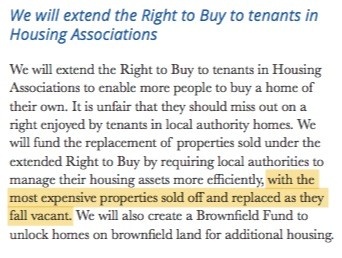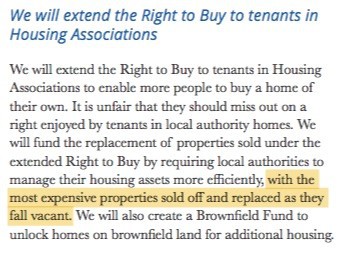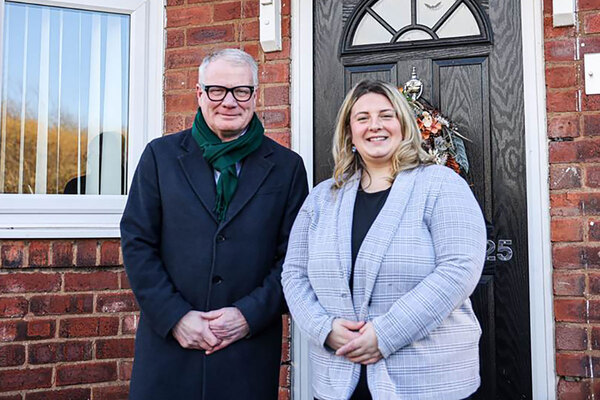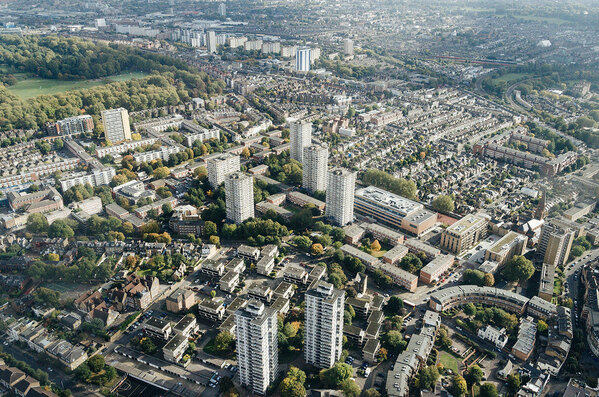 Jules Birch
Jules BirchLast word
 Jules Birch
Jules BirchThe end of resistance to the Housing and Planning Bill leaves one big question hanging: why was the government so completely determined to resist an amendment that delivered its manifesto commitment on higher-value sales?
On the face of it, the amendment by Lord Kerslake that ping-ponged back between the Commons and the Lords should not have been such an issue. It would have put on the face of the bill the funding of replacements for ‘higher-value’ homes where local authorities sign an agreement with the Department for Communities and Local Government (DCLG). It also gave them the chance to make the case for social rented replacements, though the DCLG would not be required to accept this.
But ministers treated this as a wrecking amendment and claimed financial privilege on the grounds that it would fatally undermine their plans to pay for Right to Buy discounts for housing association tenants. Their determination was reflected in a piece in Wednesday’s Sun that included a threat to make the Commons sit all night and a personal attack on Lord Kerslake by Brandon Lewis.
So why raise the stakes so high on this? On the surface at least, the government has made bigger concessions elsewhere in the bill. For example, the principle of one-for-one replacement (and two-for-one in London) is now in the legislation. And, again on the surface, the amendment was consistent with the 2015 manifesto commitment made by the Conservatives:

Note the bit I’ve highlighted (‘sold off and replaced as they fall vacant’) and also that there were two different manifesto commitments. As several MPs and peers pointed out during the debates, a Conservative press release during the campaign was even more explicit:
“No one will have to move house, but local authority properties that rank among the most expensive third of all properties of that type in their area – including private housing – will be sold off and replaced in the same area with normal affordable housing as they fall vacant. This will lead to the sale and replacement of around 15,000 homes a year, or around four in every thousand social properties. After funding replacement affordable housing on a one-for-one basis, the surplus proceeds will be used to fund the extension of Right to Buy and the Brownfield Regeneration Fund.”
Some of these details have changed as the bill has evolved – it’s now a levy on assumed sales, there’s a different but so far unspecified formula for ‘most expensive’ and no commitment to ‘in the same area’ any more – but note the bit in italics. The Right to Buy discounts would only be funded after replacements.
So why the objection to an amendment ensuring that the Housing and Planning Bill does what the Conservatives promised during the election campaign?
Lord Kerslake was in no doubt as he made his final speech on Wednesday in what has been a marathon effort by him and other peers to improve the bill:
“It is now clear that some manifesto commitments come ahead of others. In the competing demands of funding the extension of Right to Buy and funding the one-for-one replacement – both manifesto commitments – replacement will come a very clear second. Local authorities will have to draw on their own very scarce resources if one-for-one has any chance of being delivered. It has also become abundantly clear that the sums simply do not add up.’”
That much has been pretty clear from the very beginning except that there are still no actual sums to check. But contributions from ministers to the most recent debates make the same point abundantly clear.
In the Commons on Monday night, Brandon Lewis highlighted the threat to that primary manifesto commitment:
“The other place has again tried to block the government’s ability to negotiate agreements with councils that will deliver value for money for the taxpayer and ensure that housing is delivered, requiring the government to enter into agreements even where the local authorities have no acceptable plans or track record of delivery. Their proposals would also significantly reduce the funding available for the voluntary Right to Buy, again preventing this government from fulfilling their manifesto commitment.”

Brandon Lewis
And speaking in the Lords on Tuesday before the final government defeat on the bill, communities minister Baroness Williams said that the amendment was not acceptable to the government. Her reasoning was telling:
“It would require that, when the secretary of state enters into an agreement, sufficient funding must be provided to fully fund the cost of the new home.”
She went on:
“We support the involvement of local authorities in delivering new homes. We value the creative partnerships across the sector to increase housing supply. But additional homes should not be funded simply through retained payments from the sale of high-value vacant housing. We have discussed that at length throughout the course of the bill. There should be opportunities for local authorities to contribute their land, assets or funding, and to work in partnership with other providers in their area to build homes. We also want to ensure that value for money is secured, and ensure that the homes are delivered as cost-effectively as possible.”
Two things emerge from this, I think. First, Brandon Lewis may still be examining his “16 million pieces of data” on higher-value sales but the DCLG has seen enough of them to know that the twin manifesto commitment is not deliverable.
Second, local authorities will be required to use the land, the capital receipts and the borrowing capacity they might have been planning to use for genuinely additional homes to build ‘replacements’.
The replacements for forced sales will, in other words, include homes that would have been built anyway and they will be no more ‘one-for-one’ than they are under the ‘reinvigorated’ Right to Buy.
And thanks to the Housing and Planning Bill we know what those replacements will be and what they won’t be. As Baroness Williams put it yesterday:
“Let me be clear: the manifesto says that the homes sold will be replaced with new homes. It does not say that there will be like-for-like replacement. We want to make sure that the new homes serve the needs of communities, today. We do not see a reason to commit ourselves to reproducing exactly the same type of home when communities have changed and the need for housing may be different.”
Social rented housing no longer serves the needs of communities and should be sold off. And just in case anyone was in any doubt:
“Let me be very clear: ‘affordable’ includes a range of different types of housing, meaning homes that will be made available for people whose needs are not adequately served by the commercial housing market, from new homes for sub-market rent to homeownership products such as shared ownership and Starter Homes.”
So councils will be left with a Hobson’s (or maybe it should be Brandon’s) Choice: enter an agreement with the government on forced sales, sign away your land and other resources, and build Starter Homes and shared ownership; or don’t reach an agreement and hand over the forced sales money for use elsewhere.
There’s no doubt that the House of Lords has improved the Housing and Planning Bill and many of the details have still to be published. But it remains an asset grab and fundamental attack on affordable rented housing based on sums that will not add up.










